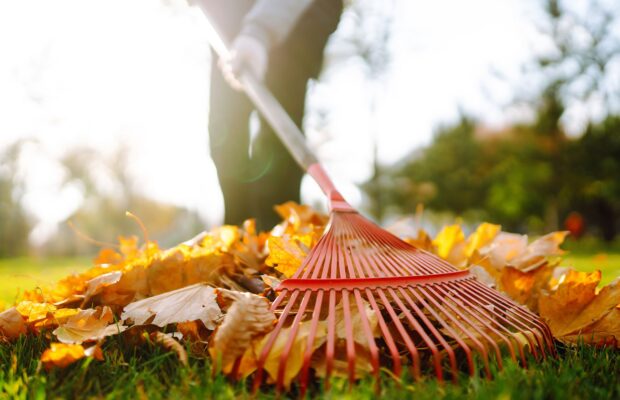Not raking leaves opens many unseen benefits for home ecosystems

In recent years, environmental scientists have been trying to understand the environmental impact of regular everyday activities of lawn and yard maintenance on the health of pollinators. Have you ever wondered about the benefits of not having to do such a stressful, annoying chore like raking fall leaves and also helping out our important pollinator friends, the birds, bees and butterflies?
According to the University of Minnesota, home owners really need not worry about raking up leaves every fall. Although large areas of deep wet leaves will create mold on your lawn, there is a way to keep the leaves on the grass and avoid raking, bagging and sending them off to landfills.
One thing we can do is mulch them, chop them up really small,and leave the mulch on the lawn as they can provide a free and natural fertilizer, promoting growth in the spring. Jeff Goerndt, state forester with the Iowa Department of Natural Resources reminds us that fallen leaves can be used to nourish your yard as fertilizer, benefiting the grass and plants in the spring, for free. Jeff Goerndt said, “You can do that with really any kind of a lawn mower. A mulching lawnmower works best, but the idea is to chop those leaves up fairly small if you’re going to leave them on your lawn. They can add a lot of benefit going into next year,”
That is one idea, but what about keeping them whole? Technically leaves are like mini ecosystems for little critters like pollinators, salamanders and seed planting mammals. Pollinators lay eggs under the leaf layers, for a spring birth. Other animals are kept warm by compacted leaves, during the winter.In addition, birds can find food among the fallen leaves.
So raking or blowing the leaves away can disrupt the cycles and even eliminate some of the most beneficial insects from existence. Not only do fallen leaves help with soil health by moisturizing it which makes it a lovable and nourishing home for earthworms, and maybe even it’s just a nice break from doing that yard work on the weekend.
At the Hartman Reserve, a beautiful 340-acre wooded isle located between Cedar Falls and Waterloo, staff employee Katherine Cantin, who is employed as a naturalist for the reserve, has a strong opinion about the removal of leaves. She responded to these two questions:
- Do you think not raking the leaves would be beneficial for pollinators and small creatures in residential areas as well, or is that not the same as forest leaves?
Not raking leaves in residential areas is about the same as leaves in timber though there may be more herbicides/pesticides in town than in the middle of the woods. In the timber natural decomposition is happening all the time with little disturbance. Things like pollinators (moths) and other small animals will still use leaf litter regardless of it’s in front of a house. It’s just the amount of disturbance and if there are any chemicals being used (and also where we are geographically, for example there’s probably rarely going to be lots of leaf litter in New York City but a decent amount in the country in Iowa.)
- If residents are not able to keep all the leaves on their property, do you have a suggestion for how to partly support these leaf microsystems? For example, piling leaves along a fence?
My two cents about this, and it’s more of a personal opinion, is that they are just leaves. Wind blows them around. Eventually snow will come (and you can’t move that all from your front yard). It’s fun to rake a pile and jump in leaves for sure, but those are just going to get spread out again. Plus, it just leaves less work and will help if they are decomposing in garden areas. Leaves are going to fall from trees and blow around no matter how many times you rake.
Besides disrupting important microsystems, removing leaves and bagging them creates more landfill waste, and as they decompose in landfills, they create escaping methane which adds to global climate change. According to a weareiowa.com news report about fall raking and environmental impact, even a small city like Des Moines creates 7,000 tons of yard waste per year, which equals the size of the Statue of Liberty.
The choice is the homeowners, of course, but it’s important to think about the environmental impact of our activities as humans and the added environmental pollution that is supercharging global climate change.
So rake up your leaves, have a jump or two, then spread out the leaves or nestle them in corners for the small beings that bring life to our planet.









You must be logged in to post a comment Login